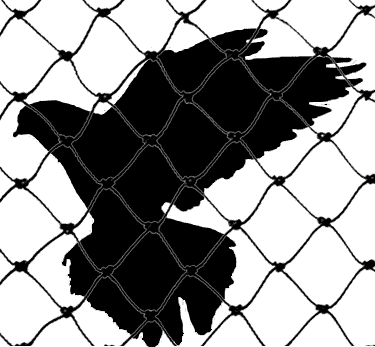
by Pigeon Patrol | Jul 20, 2023 | Columbidae, Doves, history of pigeons, MBCA, pet bird, Pigeon Control, Pigeon Droppings, Pigeon Patrol's Services
New research publishing June 18 in the open-access journal, PLOS Biology, led by Dr Lucy Taylor from the University of Oxford’s Department of Zoology now reveals that homing pigeons fit in one extra wingbeat per second when flying in pairs compared to flying solo.
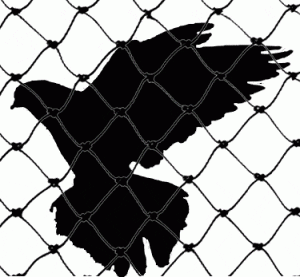
Birds that fly in ‘V’-formations, such as geese, are able to conserve energy by flying in aerodynamically optimal positions. By contrast, in species that don’t fly in formation, such as homing pigeons, the costs and benefits of flocking have been less well understood.
The research indicates that flying with another bird requires more energy compared to flying solo. ‘The results of this study were completely unexpected. Energy is the currency of life so it’s astonishing that the birds are prepared to pay a substantial energetic cost to fly together,” said lead-author, Dr Lucy Taylor.
The team used high frequency GPS and accelerometer bio-loggers to measure how pigeons changed their wingbeat patterns when flying in pairs compared to flying solo. The accelerometers act much like fitness trackers but, instead of measuring steps, the researchers measure wingbeats. ‘The increase in wingbeat frequency is equivalent to Usain Bolt running the 100m sprint at his usual speed, whilst fitting in nearly one extra step per second. The pigeons are flapping faster when flying in pairs but hardly going any faster,” said Dr Taylor.
The increase in wingbeat frequency is likely to be related to the demands of coordinating flight. Dr Taylor said: ‘Imagine trying to coordinate with and avoid hitting another small object travelling at around 44 miles per hour. This is nearly two times faster than an Olympic sprinter, and the birds can move up and down as well as left and right. For a pigeon, flapping your wings faster will both give you faster reactions and greater control over your movements, and will help keep your head stable making it easier to track where the other bird is.’
Despite the costs of fitting in one additional wingbeat per second, the birds consistently chose to fly together, suggesting that they were able to gain other benefits from flocking. Birds flying in a pair were simultaneously able to improve their homing accuracy, meaning that they could conserve energy by flying shorter routes home. Combined with increased predator protection from safety in numbers, this research suggests that the overall benefits of flocking outweigh the immediate energetic costs of changing wingbeat patterns.
Source
Pigeon Patrol Products & Services is the leading manufacturer and distributor or bird deterrent (control) products in Canada. Pigeon Patrol products have solved pest bird problems in industrial, commercial, and residential settings since 2000, by using safe and humane bird
deterrents with only bird and animal friendly solutions. At Pigeon Patrol, we manufacture and offer a variety of bird deterrents, ranging from Ultra-flex Bird Spikes with UV protection, Bird Netting, 4-S Bird Gel and the best Ultrasonic and audible sound devices on the market today.
Voted Best Canadian wholesaler for Bird Deterrent products ten years in a row.
Contact us at 1 877-4-NO-BIRD,(604) 585-9279 or visit our website at www.pigeonpatrol.ca
Pigeon/Pigeon Patrol / Pigeons Roosing / Vancouver Pigeon Control / Bird Spikes / Bird Control / Bird Deterrent / PIgeon Deterrent / Surrey Pigeon Control / Pest / Seagull deterrent / Vancouver Pigeon Blog / Birds Inside Home / Pigeons in the cities / Ice Pigeons / What to do about pigeons / sparrows, Damage by Sparrows, How to Keep Raccoons Away, Why Are Raccoons Considered Pests / De-fence / Pigeon Nesting / Bird Droppings / Pigeon Dropping / woodpecker control / Professional Bird Control Company / Keep The Birds Away / Birds/rats/seagull/pigeon/woodpecker/dove/sparrow/pidgeon control/pidgeon problem/pidgeon control/flying rats/pigeon problems/ bird netting/bird gel/bird spray/bird nails/bird guard
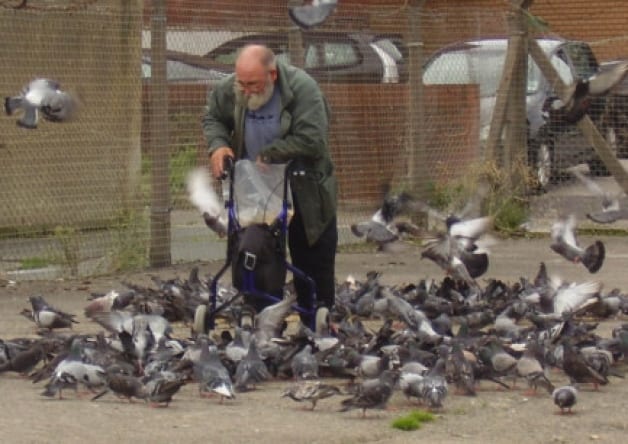
by Pigeon Patrol | Jul 6, 2023 | Bird Spike, Pigeon Droppings, Pigeon Patrol's Services, Pigeon Predators, Pigeon Spikes, Pigeons
Pigeons are often referred to as ‘rats with wings’ and like rats they have adapted well to live side by side with humans in our environment. Vast amounts of buildings and structures provide the perfect perch for pigeons to rest and our food waste and crops provide a healthy supply of food as they will eat anything they can find. Our lifestyle has eliminated any potential predators or competitors so pigeons have been allowed to thrive.
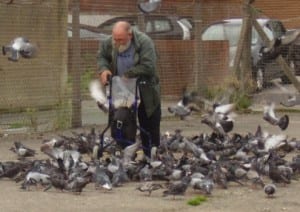
Before you try and deal with a pigeon problem on your own it is important to remember that they are not just your average pest! It requires a level of skill, expertise and a bit of imagination. A control method that works in one instance will not necessarily work in another. This is why it often requires several strategies used in unison. Whether you want to give it a go yourself or just see what options there are you will find all the pigeon control methods you need to know below.
Pigeon Control
Live Pigeon Traps – This is a highly recommended control method. Bob traps work well in most cases. Use a bait, wheat or corn will do, the birds will enter the trap through a one-way door so once inside they can’t get back out. Leave a few pigeons inside the trap as this will encourage more of these social birds into the trap. Only try this method if you are willing to kill the birds once they are caught because releasing them will not solve the problem. Call a professional pest control company if you are unsure.
Exclusion – Exclusion also known as pigeon proofing involves modifying your property to make it inaccessible to pigeons, no place to land means no pigeons! Pigeon spikes, bird slopes, bird netting, bird wires, electrified tracks and wiring can all be effective at deterring pigeons. It requires a level of skill to install thee product so it’s important to remember this before you run off to the shops and buy one of these proofing methods. Pigeon proofing can be expensive but it is also very effective and the short-term cost can save you a lot of money in the long run so it is important that they are installed properly.
Pigeon Repellents – This is a control method that makes a pigeons roosting area inhospitable without causing any harm to the bird. They are often in gel or liquid form, usually, soft, sticky or hot. It irritates the birds when they land making them fly off and find somewhere else. This is a good quick fix; these products are cheap and easy to use. However, the downside is it is only a temporary fix and can be a mess job.
Source
Pigeon Patrol Products & Services is the leading manufacturer and distributor or bird deterrent (control) products in Canada. Pigeon Patrol products have solved pest bird problems in industrial, commercial, and residential settings since 2000, by using safe and humane bird
deterrents with only bird and animal friendly solutions. At Pigeon Patrol, we manufacture and offer a variety of bird deterrents, ranging from Ultra-flex Bird Spikes with UV protection, Bird Netting, 4-S Bird Gel and the best Ultrasonic and audible sound devices on the market today.
Voted Best Canadian wholesaler for Bird Deterrent products ten years in a row.
Contact us at 1 877-4-NO-BIRD,(604) 585-9279 or visit our website at www.pigeonpatrol.ca
Pigeon/Pigeon Patrol / Pigeons Roosing / Vancouver Pigeon Control / Bird Spikes / Bird Control / Bird Deterrent / PIgeon Deterrent / Surrey Pigeon Control / Pest / Seagull deterrent / Vancouver Pigeon Blog / Birds Inside Home / Pigeons in the cities / Ice Pigeons / What to do about pigeons / sparrows, Damage by Sparrows, How to Keep Raccoons Away, Why Are Raccoons Considered Pests / De-fence / Pigeon Nesting / Bird Droppings / Pigeon Dropping / woodpecker control / Professional Bird Control Company / Keep The Birds Away / Birds/rats/seagull/pigeon/woodpecker/dove/sparrow/pidgeon control/pidgeon problem/pidgeon control/flying rats/pigeon problems/ bird netting/bird gel/bird spray/bird nails/bird guard
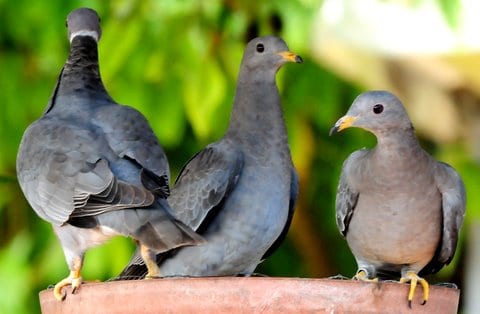
by Pigeon Patrol | Jul 6, 2023 | Bird Law, Bird Netting, Bird Spikes, Columbidae, Doves, Pigeon Droppings, Pigeon Patrol's Services
A team of scientists and conservationists has rediscovered the elusive Black-naped Pheasant-Pigeon, a large, ground-dwelling pigeon that only lives on Fergusson Island, a rugged island in the D’Entrecasteaux Archipelago off of eastern Papua New Guinea. Like other pheasant-pigeons, the Black-naped Pheasant-Pigeon has a broad and laterally compressed tail, which, along with its size, makes it closely resemble a pheasant. The bird has been observed several times over the years by local hunters, but the newly taken photographs and video are the first time the bird has been documented by scientists since 1882, when it was first described. Ornithologists know very little about the species, but believe that the population on Fergusson is very small and decreasing.
The research team photographed the pheasant-pigeon with a remote camera trap at the end of a month-long search of Fergusson.
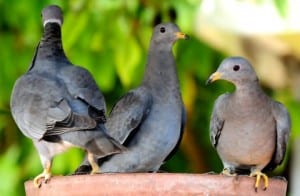
“When we collected the camera traps, I figured there was less than a one-percent chance of getting a photo of the Black-naped Pheasant-Pigeon,” said Jordan Boersma, postdoctoral researcher at Cornell University and co-leader of the expedition team. “Then as I was scrolling through the photos, I was stunned by this photo of this bird walking right past our camera.”
“After a month of searching, seeing those first photos of the pheasant-pigeon felt like finding a unicorn,” added John C. Mittermeier, Director of the Lost Birds program at ABC and co-leader of the expedition. “It is the kind of moment you dream about your entire life as a conservationist and birdwatcher.”
The expedition team — which included local Papua New Guineans working with Papua New Guinea National Museum, Cornell Lab of Ornithology, and American Bird Conservancy — arrived on Fergusson in early September 2022. They spent a month traveling around the island, interviewing local communities to identify locations to set up camera traps in hopes of finding the pheasant-pigeon. The steep, mountainous terrain on Fergusson Island made searching for the bird extremely challenging.
“It wasn’t until we reached villages on the western slope of Mt. Kilkerran that we started meeting hunters who had seen and heard the pheasant-pigeon,” said Jason Gregg, conservation biologist and a co-leader of the expedition team. “We became more confident about the local name of the bird, which is ‘Auwo,’ and felt like we were getting closer to the core habitat of where the Black-naped Pheasant-Pigeon lives.”
The expedition was the first-ever camera trapping study conducted on Fergusson Island. The team placed 12 camera traps on the slopes of Mt. Kilkerran, Fergusson’s highest mountain, and deployed an additional eight cameras in locations where local hunters had reported seeing the pheasant-pigeon in the past.
“When we finally found the Black-naped Pheasant-Pigeon, it was during the final hours of the expedition,” said Doka Nason, the member of the team who set up the camera trap that eventually photographed the lost bird. “When I saw the photos, I was incredibly excited.”
A local hunter named Augustin Gregory in the village of Duda Ununa west of Mt. Kilkerran provided a breakthrough lead on where to find the bird. Gregory reported seeing the pheasant-pigeon on multiple occasions in an area with steep ridges and valleys and described hearing the bird’s distinctive calls.
Following Gregory’s advice, the team set up cameras in an area of dense forest. A camera placed on a ridge at 3,200 feet (1,000 meters) near the Kwama River above Duda Ununa eventually captured the Black-naped Pheasant-Pigeon walking on the forest floor two days before the team was scheduled to leave the island.
Several members of the team have attempted to find the Black-naped Pheasant-Pigeon before. A two-week survey in 2019 by Boermsa, Gregg, and Nason didn’t find any traces of the bird, though it did gather reports from local hunters of a bird that could have been the pheasant-pigeon. The results from that survey helped to determine locations for the team to search in 2022.
“The communities were very excited when they saw the survey results, because many people hadn’t seen or heard of the bird until we began our project and got the camera trap photos,” said Serena Ketaloya, a conservationist from Milne Bay, Papua New Guinea. “They are now looking forward to working with us to try to protect the pheasant-pigeon.”
The team’s findings suggest that the pheasant-pigeon is likely to be extremely rare. The rugged and inaccessible forest where they rediscovered the species could be the last stronghold for the species on the island.
“This rediscovery is an incredible beacon of hope for other birds that have been lost for a half century or more,” said Christina Biggs, Manager for the Search for Lost Species at Re:wild. “The terrain the team searched was incredibly difficult, but their determination never wavered, even though so few people could remember seeing the pheasant-pigeon in recent decades.”
“As well as giving hope for searches for other lost species, the detailed information collected by the team has provided a basis for conservation of this extremely rare bird, which must indeed be highly threatened, together with the other unique species of Fergusson Island,” said Roger Safford, Senior Program Manager for Preventing Extinctions at BirdLife International.
The expedition was supported by American Bird Conservancy (ABC) and The Search for Lost Birds, a collaboration between BirdLife International, ABC, and Re:wild. The Search for Lost Birds identified the pheasant-pigeon for an expedition after a global review revealed it was one of a few bird species that have been lost to science for more than a century.
The full expedition team consisted of Jordan Boermsa, Jason Gregg, Doka Nason, Serena Ketaloya, Elimo Malesa, Bulisa Iova, Cosmo Le Breton, and John C. Mittermeier. The expedition was funded by ABC and The Search for Lost Birds, with a grant from Cosmo Le Breton, who helped to support the team in the field as a research assistant.
Source
Pigeon Patrol Products & Services is the leading manufacturer and distributor or bird deterrent (control) products in Canada. Pigeon Patrol products have solved pest bird problems in industrial, commercial, and residential settings since 2000, by using safe and humane bird
deterrents with only bird and animal friendly solutions. At Pigeon Patrol, we manufacture and offer a variety of bird deterrents, ranging from Ultra-flex Bird Spikes with UV protection, Bird Netting, 4-S Bird Gel and the best Ultrasonic and audible sound devices on the market today.
Voted Best Canadian wholesaler for Bird Deterrent products ten years in a row.
Contact us at 1 877-4-NO-BIRD,(604) 585-9279 or visit our website at www.pigeonpatrol.ca
Pigeon/Pigeon Patrol / Pigeons Roosing / Vancouver Pigeon Control / Bird Spikes / Bird Control / Bird Deterrent / PIgeon Deterrent / Surrey Pigeon Control / Pest / Seagull deterrent / Vancouver Pigeon Blog / Birds Inside Home / Pigeons in the cities / Ice Pigeons / What to do about pigeons / sparrows, Damage by Sparrows, How to Keep Raccoons Away, Why Are Raccoons Considered Pests / De-fence / Pigeon Nesting / Bird Droppings / Pigeon Dropping / woodpecker control / Professional Bird Control Company / Keep The Birds Away / Birds/rats/seagull/pigeon/woodpecker/dove/sparrow/pidgeon control/pidgeon problem/pidgeon control/flying rats/pigeon problems/ bird netting/bird gel/bird spray/bird nails/bird guard
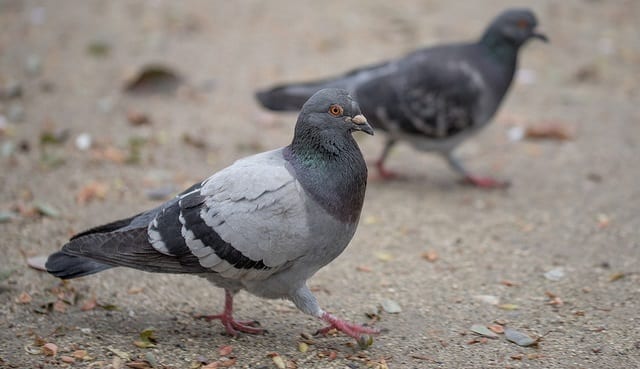
by Pigeon Patrol | Jun 21, 2023 | MBCA, pet bird, Pigeon Control, Pigeon Droppings, Pigeon Patrol's Services, Pigeon Predators
Pigeons are a very common species of bird in India. Pigeons can breed upto 8 times a year, therefore they are found everywhere. The word ‘pigeon’ comes from the Latin word called ‘pipio’, meaning ‘young chirping bird’. These young chirping birds love to create a mess and leave stinky droppings everywhere and anywhere.
Pigeons can sometimes be hard to deal with as they always wander in groups. They can mess your balcony or your vehicle. They can make consistent distracting noises which can give you a headache. They barge in your house and do not know how to leave. Pigeon droppings and nests can stink up a place. They can clog pipes, water-spouts etc. Read on to get rid of pigeons and their belongings.
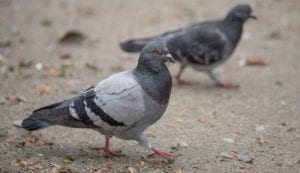
How to get rid of pigeons:
In India, pigeons are protected under Section 428 and 429 of the Indian Penal Code(IPC) (no wonder they are fearless). Even if this was not the case one must always go for non-violent options. So here is a list of the ways in which you can get rid of pigeons and their poop
Sound distraction:
You can hang wind-chimes at places prone to pigeons. They do not like it and as the chime moves and makes sound with the wind it kind of keeps the pigeons away and gives you a pigeon-free and melodious surrounding.
Reflecting surfaces:
Use shiny materials like aluminum foil or mirror to confuse the pigeons and keep them at bay. It plates tricks with their senses and keeps them off the place.
Professional bird nets or covering:
Pigeon nets for balconies are advised but try buying nets with smaller gap holes to avoid any invasions of pigeons.
Pigeon repellents:
You can use organic, home-made pigeon repellents. It can be effective in keeping pigeons away from the balcony or windows. (Providing you with a comparatively clean floor.)
Cover things up:
Pigeons can create a lot of mess out of open trash bins. Keep your trash covered if it is kept in an accessible place for pigeons to avoid any spill and mess.
Pigeons are not pets:
Pigeons are not pets and don’t treat them like one. Discourage people from feeding these nasty, parasite-carrying pigeons to stop them from coming back. Do not make them habitual of a place they can get food from as it will also become a place they use for frequent stinky white droppings.
Introduce fear:
It is said that pigeons are sort of taken aback by owls and snakes. You cannot get a real one but you can get a plastic owl or a rubber snake for your balcony or workspace, keep them in a corner most visited by the pigeons. It is a short-term trick to get rid of the pigeons.
Source
Pigeon Patrol Products & Services is the leading manufacturer and distributor or bird deterrent (control) products in Canada. Pigeon Patrol products have solved pest bird problems in industrial, commercial, and residential settings since 2000, by using safe and humane bird
deterrents with only bird and animal friendly solutions. At Pigeon Patrol, we manufacture and offer a variety of bird deterrents, ranging from Ultra-flex Bird Spikes with UV protection, Bird Netting, 4-S Bird Gel and the best Ultrasonic and audible sound devices on the market today.
Voted Best Canadian wholesaler for Bird Deterrent products ten years in a row.
Contact us at 1 877-4-NO-BIRD,(604) 585-9279 or visit our website at www.pigeonpatrol.ca
Pigeon/Pigeon Patrol / Pigeons Roosing / Vancouver Pigeon Control / Bird Spikes / Bird Control / Bird Deterrent / PIgeon Deterrent / Surrey Pigeon Control / Pest / Seagull deterrent / Vancouver Pigeon Blog / Birds Inside Home / Pigeons in the cities / Ice Pigeons / What to do about pigeons / sparrows, Damage by Sparrows, How to Keep Raccoons Away, Why Are Raccoons Considered Pests / De-fence / Pigeon Nesting / Bird Droppings / Pigeon Dropping / woodpecker control / Professional Bird Control Company / Keep The Birds Away / Birds/rats/seagull/pigeon/woodpecker/dove/sparrow/pidgeon control/pidgeon problem/pidgeon control/flying rats/pigeon problems/ bird netting/bird gel/bird spray/bird nails/bird guard
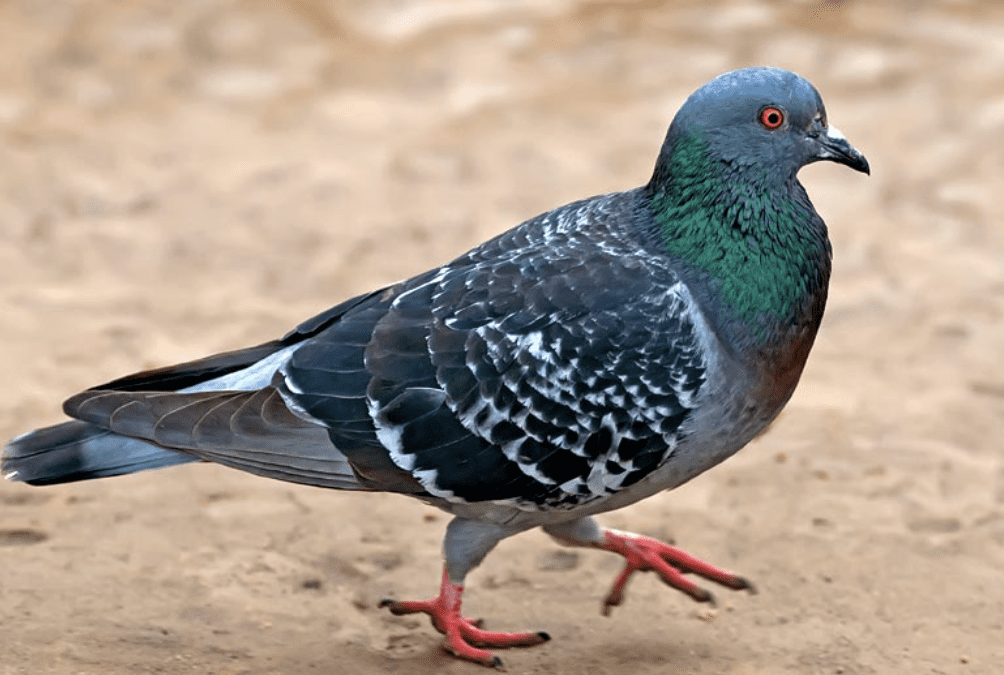
by Pigeon Patrol | Jun 21, 2023 | Bird Spike, Pigeon Droppings, Pigeon Patrol's Services, Pigeon Predators, Pigeon Spikes, Pigeons
Pigeons can carry lice, ticks and disease-bearing mites, and their acidic droppings can damage your car’s paint and anything else it comes in contact with. To make matters worse, once your home becomes their favorite place to perch or nest, it takes some effort to get rid of them.
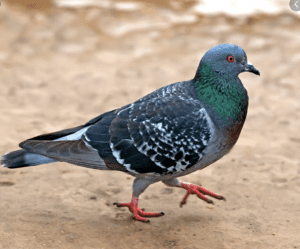
Luckily, you can encourage them to move somewhere else without causing them any harm. Here are 9 ways to get rid of pigeons if you have an infestation.
-
Make noise
An ultrasonic bird repeller discourages pigeons from landing on or near your house by emitting the sounds of their predators and bird distress calls. Because these sounds are ultrasonic, you won’t be able to hear them unless you turn the volume up to the highest setting. But, area pigeons will. While some pigeons will immediately leave your home after hearing the repeller, others will take time to associate your house with the noises and decide to roost elsewhere.
These devices start at about $50 and top out at $200, depending on how far they transmit the sounds (some can cover up to 5,000 square feet) and their features. On the downside, ultrasonic bird repellers don’t just repel pigeons. They can repel other animals, too, and can disturb your dog or cat.
-
Give them no place to roost
A common solution to a pigeon problem, bird spikes are thorn-like protrusions, usually made of plastic, that attach to a strip. When pigeons try to land, the spikes make it impossible to find a place to roost. Most homeowners install them to the roofline, but you can also install them on beams, window sills, ledges, fences and gates. You can purchase these at most home improvement and garden centers for $25 to $40 for a 7’ to 8’ strip.
Bird spikes are one of the most effective ways to get rid of pigeons because they can’t roost where there is no place for them. However, they can detract from your home aesthetically.
-
Be a bad host
Similar to bird spikes, bird wire runs 3” to 4” above the space where you don’t want pigeons to land. As a bird begins its descent, it contacts the wire, which will feel unsteady, and abort his landing. Over time, pigeons will determine your house isn’t a safe place to land and avoid it altogether.
To install bird wire, you’ll need thin, metal posts that attach to your roofline. Unfortunately, it’s not easy to find at home improvement stores or online, so you may have to hire a pest control company to install it for you.
-
Get a gel for that
Unlike bird wire, you can easily install bird repellant gel. This clear, sticky gel comes in a caulk tube that you apply to your roof, fence or wherever they perch. When a pigeon lands on the gel, it will sense its stickiness and leave. Each tube sells for about $15 to $20 and should cover about 10 to 12 feet.
It does have a few downsides. Bird repellant gel needs to be replaced at least annually and, as it collects dust, can become unsightly. On a more positive note, though, it’s virtually invisible and can reduce other pests, such as ants, which can get stuck in it.
-
Hang reflective tape
Another popular way to get rid of pigeons is to hang reflective scare tape, sometimes also called reflective bird tape or flash tape. Sold in rolls of up to 350 feet, this tape has a holographic pattern that interacts with light and disorients birds of all kinds. To use it, cut the tape into strips and hang them wherever you want to discourage the pigeons from landing.
Not only does the shiny “flash” from the tape fluttering in the breeze confuse and scare the pigeon but the sound of it moving upsets them, too. Some people don’t like the look of reflectors, but for less than $15 for 350 feet, it may be worth it.
-
Surprise them with a little sprinkle
Good for all types of pests, including skunks and raccoons, a motion-activated sprinkler scares pigeons away with a combination of sound and water whenever it detects motion. Once activated, it will blast water in the direction where motion was detected for 5 seconds. Most cost between $50 and $75 and can be customized to work only at certain times of the day. After its program, all you have to do is attach it to a hose.
These systems do have a drawback, though, in that they can’t tell the difference between a pigeon, your dog or the neighbor’s kid. If pets or other people routinely walk within the perimeter specified on the water jet’s packaging, you might want to consider using a different method.
-
Get an owl decoy
Pigeons want to avoid their predators just as much as any other bird. Use a frightening decoy to your advantage. Owl decoys work well to deter pigeons. You can find them at most home improvement and garden centers, and they can range from simple decoys with heads that rotate in a breeze to solar-powered ones that emit “hoots” and flap their wings.
Since most weigh very little, you’ll want to secure the base so it doesn’t tip over. And, although decoys are designed to withstand the elements, over time, you may need to clean the sensor on yours or replace the decoy outright. Another possible concern is decoys can deter other birds and smaller animals, like squirrels, from visiting your yard.
-
Lure them with bait
If you don’t have many pigeons to deal with, a pigeon trap may do the trick. Specifically designed for pigeons, these traps can accommodate up to 10 live birds. To use one, place fruit, seeds, cracked corn or other treats inside. When a bird enters through the one-way door to eat, it will close behind him, and he won’t be able to get out. Once you have trapped the birds, you can drive them far from your house and release them.
Traps generally cost between $75 and $100, but those with extra features, like shade covers or water dispensers, will cost more. The good news is they’re effective when you’re contending with a few birds; the bad, they don’t work well for infestations.
-
Be proactive
As creatures of habit, pigeons return to the same place over and over unless you give them a reason not to. While most of the above methods scare them away, you can also remove the things that first attracted them there. Cover all trash cans, pet food and standing water, like birdbaths. Put netting over fruit trees and your garden plants. And don’t overseed your grass or set out other seeds.
It also helps to seal off any gaps in your roof shingles, cap vents and chimneys, and fill any holes where they might nest. These steps will make your home less attractive and may encourage them to find another place with access to berries and places to make a nest.
Extra help
You’ll want to get your pigeon problem under control quickly if you plan to show your house or if you move into a new home with an infestation. In those cases, consider hiring a professional pest control company that will find the right solution for your unique situation.
Source
Pigeon Patrol Products & Services is the leading manufacturer and distributor or bird deterrent (control) products in Canada. Pigeon Patrol products have solved pest bird problems in industrial, commercial, and residential settings since 2000, by using safe and humane bird
deterrents with only bird and animal friendly solutions. At Pigeon Patrol, we manufacture and offer a variety of bird deterrents, ranging from Ultra-flex Bird Spikes with UV protection, Bird Netting, 4-S Bird Gel and the best Ultrasonic and audible sound devices on the market today.
Voted Best Canadian wholesaler for Bird Deterrent products ten years in a row.
Contact us at 1 877-4-NO-BIRD,(604) 585-9279 or visit our website at www.pigeonpatrol.ca
Pigeon/Pigeon Patrol / Pigeons Roosing / Vancouver Pigeon Control / Bird Spikes / Bird Control / Bird Deterrent / PIgeon Deterrent / Surrey Pigeon Control / Pest / Seagull deterrent / Vancouver Pigeon Blog / Birds Inside Home / Pigeons in the cities / Ice Pigeons / What to do about pigeons / sparrows, Damage by Sparrows, How to Keep Raccoons Away, Why Are Raccoons Considered Pests / De-fence / Pigeon Nesting / Bird Droppings / Pigeon Dropping / woodpecker control / Professional Bird Control Company / Keep The Birds Away / Birds/rats/seagull/pigeon/woodpecker/dove/sparrow/pidgeon control/pidgeon problem/pidgeon control/flying rats/pigeon problems/ bird netting/bird gel/bird spray/bird nails/bird guard
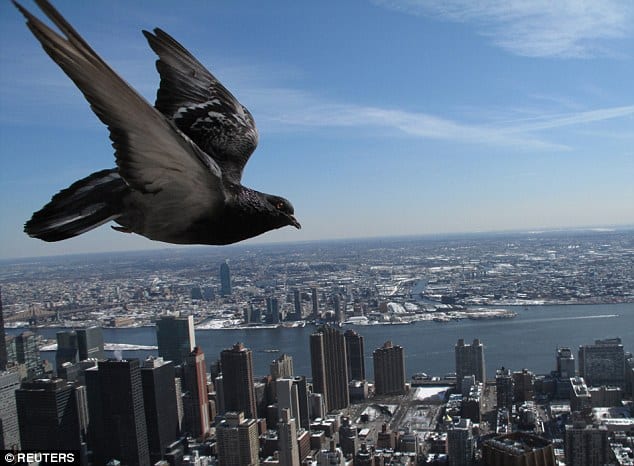
by Pigeon Patrol | Jun 14, 2023 | Bird Spike, Pigeon Droppings, Pigeon Patrol's Services, Pigeon Predators, Pigeon Spikes, Pigeons, Pigeons in the News
Rats with wings, or majestic streetwise bird? It’s a debate that’s raged almost as long as New York City has been called that. And this week, the war between the two sides boiled over again.
It started when the exclusive University Club had its feathers ruffled. It wanted to drape its storied building in netting, to protect it from pigeon poo, which eats away at stone and metal. But the Landmarks Commission said it would have to wait for approval, as it would be a “visible change” to the landmarked Italian Renaissance building’s façade. As if the crap wasn’t a “visible change” enough.
Meanwhile, over on East 93rd Street, there was a scuffle involving longtime pigeon activist Anna Dove and her neighbor, who snatched away her bag of seed after he saw her feeding the pigeons on the sidewalk. The police were summoned.
“It’s disgusting,” said her nemesis, retired teacher Arthur Schwartz. “She’s feeding the rats.”
And with the live pigeon-shooting state championships in Pennsylvania coming up, it’s almost guaranteed that there will be an increase in demand of pigeon-poaching — New York City is a favorite spot for trapping them and transporting them to be used as live targets. The animal-rights activists will be out with their cameras and signs to stop them.
No matter which side you’re on, one things for certain — by the end, things are going to get a little birdbrained.
*
“It’s not the pigeons that are the problem, it’s the number of them,” says Andrew D. Blechman, author of “Pigeons: The Fascinating Saga of the World’s Most Revered and Reviled Bird.” “They’re gentle creatures. The problem is that they get in our face, just like we get in each other’s faces.”
No one one’s quite sure of how many pigeons are in New York City. One adage is “one pigeon per person,” which would put their numbers at about 7 million. They each produce about 25 pounds of waste per year.
Pigeons love cities because of the many ledges, windowsills, eaves and rooftops available for them to roost in, which mimics their natural habitat of high cliffs. Pigeon pairings are monogamous, often mating for life, and both parents raise the babies — called squab — for a time, sitting on the eggs in shifts.
The pigeon includes about 298 species of bird, but the Rock Dove is the most common to the New York area, according to the Parks Department. The grey, bobbing-headed birds usually have purple-green iridescence around the neck area. They’re the scruffiest members of the dove family — although “dove” usually connotes the pure white symbols of peace, not the pizza scavengers of city streets. (Just say they’ve been pigeonholed.)
“If they were white,” Blechman says, “people would love them.”
Blame the French for our pigeon problems. The little pluckers first arrived in the early 1600s with French settlers who used them for meat. They were easy to raise — they could be kept in a barn, where they’d perch on the rafters, and young pigeons served as a good source of protein.
But they soon escaped their confines and went feral.
City life agreed with them and allowed them to flourish — and in some cases, over-flourish. Their natural predators, like falcons and hawks, aren’t found here in great numbers.
Courtney Humphries, author of “Superdove: How the Pigeon Took Manhattan . . . And the World,” concedes that pigeon are pilloried partly because of their “persistence. They nest on the buildings we consider our territory, and they don’t like to be moved.”
The average city pigeon has a lifespan of three to five years. With all the food scattered throughout the garbage cans and sidewalks — plus well-meaning human feeders — they spend less time looking for grub, which leaves more time for mating.
“The biggest problem is the people who overfeed them,” says Blechman. “Every city has about a dozen of them, and they’re the ones who cause the [overpopulation] problem.”
He suggests that if you want to feed the birds, hand out just a teaspoon full of birdseed for a flock. “It’s just enough to give them a little extra energy while they’re out trying to find their own food.”
“If nobody fed pigeons, I think things would look a lot different,” agrees Humphries, who says that human feeders end up creating dense flocks. “A lot of the problem with pigeons comes from people.”
If you can’t freeze the hearts of little old ladies, though, you could try eating them (the pigeons, that is). Squab — baby pigeons that haven’t flown yet — is on the menu at many restaurants around the city, particularly French. They’re “basically the milk-fed veal of the sky,” says Blechman — tender, mostly dark meat, and one of the only poultry that can be eaten rare. (Pigeons produce their own milk-like substance, which they feed to their young by regurgitation.)
Pigeon pot pie was a huge colonial favorite. Today, try the Squab and Foie Croustillant at the Modern, Danny Meyer’s restaurant at the Museum of Modern Art.
*
Unless the appetite for squab skyrockets, New York’s options are few. Avicide — poisoning birds — was made illegal in 2000, when the state Legislature passed a bill outlawing the use of “flock dispersal agents” like Avitrol in cities with more than 1 million people.
Before that, property managers regularly hired pest control services to dole out Avatrol to flocks of pigeons.
“In theory, you would mix it with feed, and when one pigeon ate some of the treated food, they would begin to suffer from neurological toxicity,” explained Stephanie Boyles, wildlife expert at the Humane Society of the United States. “When their flockmates saw them suffering, it would prompt them to leave the area.”
In practice, however, overdosing often led to large numbers of birds convulsing and writhing in pain on the street before their deaths. Welcome to New York!
The last major flare-up between pigeons and people was in 2007, when City Councilman Simcha Felder released a report plaintively titled, “Curbing the Pigeon Conundrum.”
Claiming that their droppings carried a host of diseases like histoplasmosis, he proposed a $1,000 fine to anyone feeding them, as well as curbing their numbers through birth control (a measure that cities like Los Angeles have adopted, although some argue that it’s unsustainable), and appointing a city “Pigeon Czar” to oversee other pigeon-control issues.
The NYC Department of of Health and Mental Hygiene maintains that contact with their droppings only poses a small health risk, and that “routine cleaning of droppings (e.g. from windowsills) does not pose a serious health risk to most people,” although disposable gloves are a good idea.
The Humane Society came out against the anti-feeding fine because they weren’t sure it would actually make a difference in reducing flocks, said Boyles. “We still suggest working with communities to create places where pigeons are welcome, and discouraging them where they’re not.”
While Felder’s bill didn’t fly, it was only one of many efforts to keep pigeons clipped.
In 2006, pigeon loitering was so dense near the Army Recruitment Center in Times Square, speakers were set up to broadcast sounds of falcons and pigeons being attacked, in hopes of scaring them away. In 2003, they had so overwhelmed Bryant Park that the operators invited a falconer and his hawk to the park for a week to scare away (not eat) the pigeons.
In 2007, the MTA installed Bird-B-Gone on some of its elevated stations along the 7 line, as well as others. The electronic system zapped birds that got too close.
In the ’80s, plastic owls were a big seller. Today, a slightly more high-tech version, called the RoboHawk, moves its head, wings, and makes what its creators hope are pigeon-threatening sounds.
Every so often, a politician considers reviving an overall anti-feeding bill, since, for now, it’s only illegal in city parks where signs are posted (the fine is usually $50).
Some cling to the hope that the city will come to its senses and declare war. Because they’re a non-native species, pigeons are not protected by either the Federal Migratory Birds Act or New York state laws. Can anyone say hunting season?
It’s got to be done mafia-style, though. Culling is only a temporary solution — as with most wild birds, quick breeding will put their numbers back to pre-cull figures within weeks, according to Pigeon Control Advisory Service.
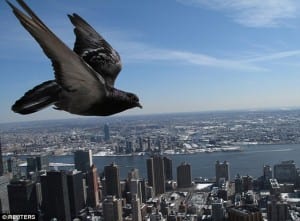
But spare a thought, pigeon haters, for your majestic foe. Pigeons have more qualities than you think.
Although city birds aren’t particularly active, pigeons are built to be athletes — a trained bird can fly up to 60 miles per hour, and they can stay in the air for 500 miles. They’re meant for flying long distances, and have “homing” instincts, which means they will naturally find their way back.
This talent is why they were literally drafted into the United States Army Pigeon Service.
A million served in both world wars, where they delivered messages across enemy lines and saved thousands of soldiers’ lives. One pigeon, Cher Ami, won a French medal for his bravery for flying through gunfire, finally delivering the message dangling from what was left of his foot. He’s now stuffed and in the Smithsonian.
The army’s Pigeon Breeding and Training Center was based at Fort Monmouth, NJ, and opened in 1917. Many of its “Pigeoneers” were “basically just boys out of Brooklyn, and they’d just bring their best birds,” Humphries says. (The training center was closed in 1957 when the Army stopped using them as messengers.)
Keeping pigeons on rooftops — and racing them — used to be much more popular. Who can forget Marlon Brando’s character in the 1954 film “On the Waterfront” shouting up to his friend Joey, “I got one of your birds!” right before Joey “accidentally” falls off the roof?
The city is full of equally vocal bird-lovers.
“They animate our lives,” argues Blechman, who says that despite writing a book on pigeons, he is not a “bird person,” and admits to having eaten them before. He’s come around, though. “You look out the window and you can have a pigeon land on your windowsill, and the same one will come back every day, and at the same time.
“What would the lonely, the unemployed, and the elderly do every day if it weren’t for pigeons?”
The Internet is atwitter with kooky pigeon fans. There’s a pigeon appreciation society on Facebook. On photo-sharing site Flickr, there’s a group called The Global Pigeon Art Appreciation Society.
“You are not alone,” the site reads. “Many artists have been inspired by pigeons.”
There is also a city listserv called “New York Pigeon People,” where members discuss how to rescue birds and share pigeon news.
You can eat them, race them, breed them, feed them, but you can’t escape them, whether you consider them the most misunderstood creatures of the flying community or the world’s worst bird. As Blechman put it, “We’re just going to have to learn to co-exist.”
Source
Pigeon Patrol Products & Services is the leading manufacturer and distributor or bird deterrent (control) products in Canada. Pigeon Patrol products have solved pest bird problems in industrial, commercial, and residential settings since 2000, by using safe and humane bird
deterrents with only bird and animal friendly solutions. At Pigeon Patrol, we manufacture and offer a variety of bird deterrents, ranging from Ultra-flex Bird Spikes with UV protection, Bird Netting, 4-S Bird Gel and the best Ultrasonic and audible sound devices on the market today.
Voted Best Canadian wholesaler for Bird Deterrent products ten years in a row.
Contact us at 1 877-4-NO-BIRD,(604) 585-9279 or visit our website at www.pigeonpatrol.ca
Pigeon/Pigeon Patrol / Pigeons Roosing / Vancouver Pigeon Control / Bird Spikes / Bird Control / Bird Deterrent / PIgeon Deterrent / Surrey Pigeon Control / Pest / Seagull deterrent / Vancouver Pigeon Blog / Birds Inside Home / Pigeons in the cities / Ice Pigeons / What to do about pigeons / sparrows, Damage by Sparrows, How to Keep Raccoons Away, Why Are Raccoons Considered Pests / De-fence / Pigeon Nesting / Bird Droppings / Pigeon Dropping / woodpecker control / Professional Bird Control Company / Keep The Birds Away / Birds/rats/seagull/pigeon/woodpecker/dove/sparrow/pidgeon control/pidgeon problem/pidgeon control/flying rats/pigeon problems/ bird netting/bird gel/bird spray/bird nails/bird guard












